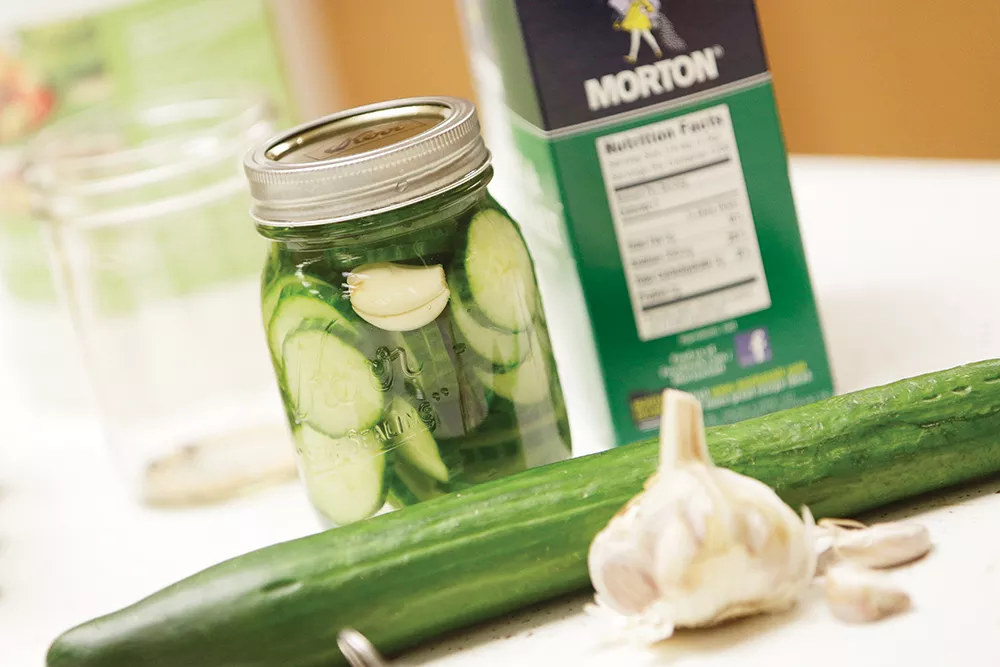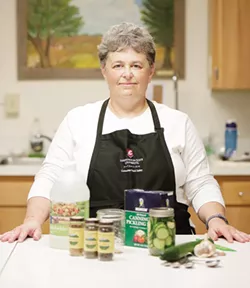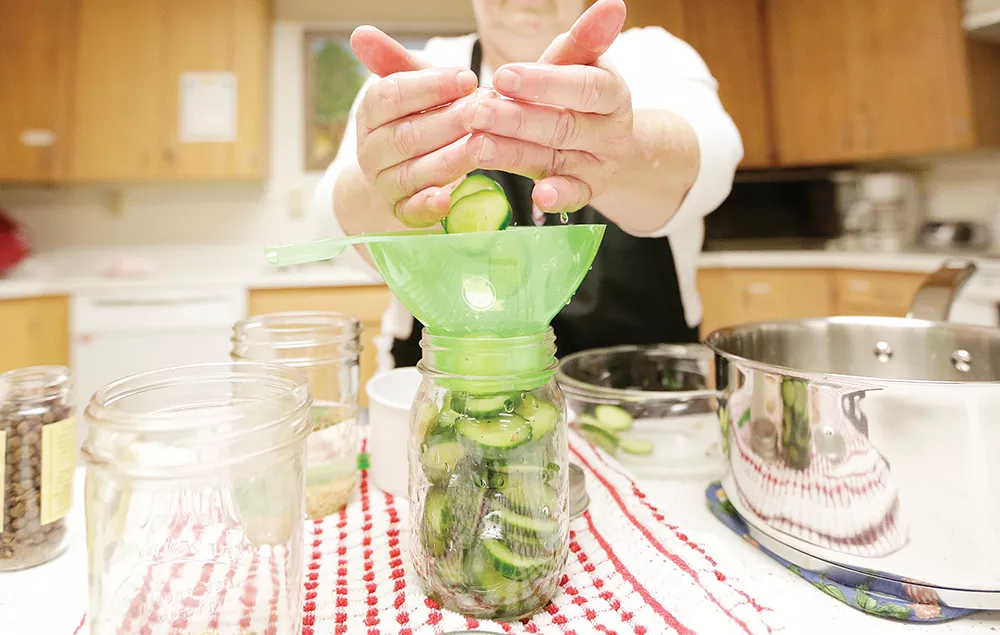For many people, harvest time marks the end of one season and the beginning of another important piece in the food system: preservation. Whether you've spent months planting, caring for and transplanting seedlings into food-producing superstars or found a reliable vendor who does the same, fall finds us thinking about how to preserve summer's goodness through the coming winter and beyond.
Canning, for example, is a popular preservation method — heating and sealing food in specialized glass jars — yet it's only one of 12 common techniques, says Anna Kestell, Food Preservation/Safety Education Coordinator for Washington State University's Spokane County Extension program. Proper refrigeration, which should occur between 34° and 40° Fahrenheit, is the simplest method of preserving food, yet it's obviously not as viable for the long term as freezing, fermenting or curing food. And not every food preservation method is ideal for every situation.
Kestell suggests two guiding principles: "No. 1, what are your plans for it? No. 2, how are you going to eat it?" If for example, tomatoes are used in pureed sauces, then whole-canning them makes sense, as does freezing them.
Individual taste is certainly a factor. Preservation methods can affect taste, texture and even color in ways from subtle to extreme — think pickling versus smoking.
Cost may be another consideration in determining the best food preservation method. Based on a WSU study, freezing, says Kestell, can be more than twice as expensive as canning and three times more costly than dehydrating, taking into account equipment needs, packaging and power usage.
Though it's not the most convenient, Kestell says canning is her go-to, especially after losing a large amount of frozen food to an ice storm a few years back.
Kestell, who cans a huge variety of food, including wild and domestic meat, recommends starting with small-batch canning, and something basic like fruits and vegetables. There's a learning curve to canning safely, she cautions, just as with most food preservation methods. Unlike mold, however, or food that's gone rotten, improperly canned food doesn't exhibit a telltale bad odor; the only clue might be damaged seals on the jars.
Illnesses from canning are rare, says Kestell. The Centers for Disease Control reports that of the 39 confirmed cases of foodborne botulism nationwide in 2015, only one or two were clearly from home-canned food, compared to more than 15,000 confirmed foodborne illnesses nationwide due to such things as improperly cooked meat or poor sanitation.
Kestell relies on several sources to keep her canning savvy current, including the United States Department of Agriculture and So Easy to Prepare, a compendium of techniques, illustrations and recipes published by the University of Georgia Extension. Canning requires vigilance and attention to detail. Vinegar, for example, can range from 3 percent to 20 percent acidity. While the currently accepted level of acidity in cider and distilled vinegar is 5 percent, it used to be readily available in 7-percent solutions. So the USDA revamped its canning guidelines in 2009 to more accurately reflect formulas using the 5-percent solution.
Another vital component of proper canning is location, says Kestell. "Most recipes are written for sea level," says Kestell, noting that above 1,000 feet, processing times must increase. Spokane County, for example, varies from slightly below to slightly above 2,000 feet, according to Elevation.net. (Inlander offices in Kendall Yards are 1,866 feet, while High Drive homes sit at 2,349 feet.)
If it all sounds way too complicated, Kestell can help; she's been teaching variations of her "Grow It and Stow It" food preservation program since arriving at WSU six years ago. Introductory sessions at area libraries cover the basics, while numerous publications online detail specific methods for canning, drying, freezing, smoking, and even cheesemaking. ♦
For more information and free, downloadable guides, go online to WSU Extensions' publications page (pubs.wsu.edu), click on Health and Wellness, and select Consumer Food Safety.
BREAD-AND-BUTTER PICKLES
This recipe yields 4 quarts of pickles.
6 pounds (4- 5-inch) pickling cukes
8 cups (about 3 pounds) thinly sliced onions
½ cup canning or pickling salt
Ice
4 cups vinegar (5 percent acidity)
4½ cups sugar
2 tablespoons mustard seed
1½ tablespoons celery seed
1 tablespoon ground turmeric
Wash cucumbers. Discard 1/16 of an inch off blossom end. Cut into 3/16-inch slices.
Combine cucumbers and onions in a large bowl. Add salt. Cover with 2 inches crushed or cubed ice and refrigerate 3 to 4 hours, adding more ice as needed. Drain when done.
Combine remaining ingredients in a large pot and boil 10 minutes.
Add drained cucumbers and onions to the vinegar solution and slowly reheat to boiling.
Fill hot pint or quart jars with slices and cooking syrup, leaving a half-inch of headspace. Remove air bubbles and adjust headspace, if needed. Process according to size of jar and altitude: Jar size Up to 1,000 feet 1,001-6,000 feet Above 6,001 feet
Jar size: Pint=10 minutes at up to 1,000 feet, 15 minutes between 1,001 and 6,000 feet, 20 minutes above 6,001 feet
Jar size: Quart= 10 minutes at up to 1,000 feet, 15 minutes between 1,001 and 6,000 feet, 20 minutes above 6,001 feet






















